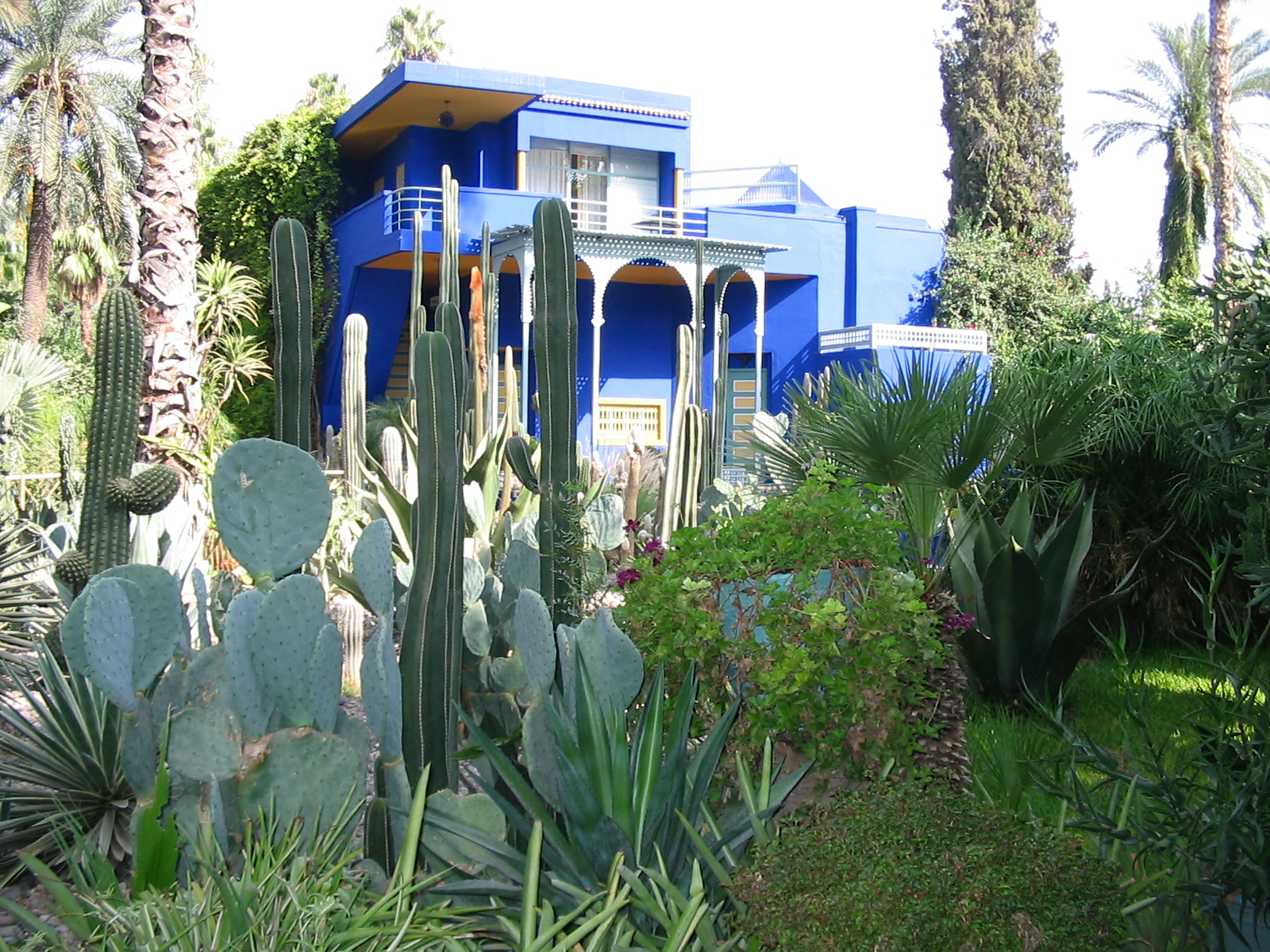|
Jardin Majorelle
The Majorelle Garden (, , ) is a botanical garden and artist's landscape garden in Marrakesh, Morocco. It was created by the French Orientalist artist Jacques Majorelle over almost forty years, starting in 1923, and features a Cubist villa designed by French architect Paul Sinoir in the 1930s. The property was the residence of the artist and his wife from 1923 until their divorce in the 1950s. In the 1980s, the property was purchased by the fashion designer Yves Saint-Laurent and his business manager Pierre Bergé who worked to restore it. Today, the garden and villa complex is open to the public. The villa houses the Berber Museum and in 2017 the Yves Saint Laurent Museum opened nearby. History The Majorelle Garden was designed by the French artist, Jacques Majorelle (1886–1962), son of the Art Nouveau ''ébéniste'' (cabinet-maker) of Nancy, Louis Majorelle. As a young aspiring painter, Jacques Majorelle was sent to Morocco in around 1917 to convalesce from a serious medic ... [...More Info...] [...Related Items...] OR: [Wikipedia] [Google] [Baidu] |
Marrakesh
Marrakesh or Marrakech (; , ) is the fourth-largest city in Morocco. It is one of the four imperial cities of Morocco and is the capital of the Marrakesh–Safi Regions of Morocco, region. The city lies west of the foothills of the Atlas Mountains. The city was founded circa 1070 by Abu Bakr ibn Umar as the capital of the Almoravid dynasty. The Almoravids established the first major structures in the city and shaped its layout for centuries to come. The red Walls of Marrakesh, walls of the city, built by Ali ibn Yusuf in 1122–1123, and various buildings constructed in red sandstone afterwards, have given the city the nickname of the "Red City" or "Ochre City". Marrakesh grew rapidly and established itself as a cultural, religious, and trading center for the Maghreb. After a period of decline, Marrakesh regained its status in the early 16th century as the capital of the Saadian dynasty, with sultans Abdallah al-Ghalib and Ahmad al-Mansur embellishing the city with an array of s ... [...More Info...] [...Related Items...] OR: [Wikipedia] [Google] [Baidu] |
Art Nouveau
Art Nouveau ( ; ; ), Jugendstil and Sezessionstil in German, is an international style of art, architecture, and applied art, especially the decorative arts. It was often inspired by natural forms such as the sinuous curves of plants and flowers. Other characteristics of Art Nouveau were a sense of dynamism and movement, often given by asymmetry or whiplash lines, and the use of modern materials, particularly iron, glass, ceramics and later concrete, to create unusual forms and larger open spaces.Sembach, Klaus-Jürgen, ''L'Art Nouveau'' (2013), pp. 8–30 It was popular between 1890 and 1910 during the Belle Époque period, and was a reaction against the academicism, eclecticism and historicism of 19th century architecture and decorative art. One major objective of Art Nouveau was to break down the traditional distinction between fine arts (especially painting and sculpture) and applied arts. It was most widely used in interior design, graphic arts, furniture, glass ... [...More Info...] [...Related Items...] OR: [Wikipedia] [Google] [Baidu] |
Maisons Des Illustres
''Maisons des Illustres'' is a mark of quality (French: ''label de qualité'') of buildings in France, indicating places where the purpose is to preserve the memory of people distinguished in the political, social and cultural history of France."Label « Maisons des illustres »" Ministère de la Culture. Retrieved 31 May 2019. It was created by , the Minister of Culture, in September 2011, to make known to the public the places that keep collections related to personalities, and give them a higher profile. He said that they should be "more than reliquaries, but real living homes". Initially, 111 ... [...More Info...] [...Related Items...] OR: [Wikipedia] [Google] [Baidu] |
Cactus Gardens
A cactus (: cacti, cactuses, or less commonly, cactus) is a member of the plant family Cactaceae (), a family of the order Caryophyllales comprising about 127 genera with some 1,750 known species. The word ''cactus'' derives, through Latin, from the Ancient Greek word (''káktos''), a name originally used by Theophrastus for a spiny plant whose identity is now not certain. Cacti occur in a wide range of shapes and sizes. They are native to the Americas, ranging from Patagonia in the south to parts of western Canada in the north, with the exception of ''Rhipsalis baccifera'', which is also found in Africa and Sri Lanka. Cacti are adapted to live in very dry environments, including the Atacama Desert, one of the driest places on Earth. Because of this, cacti show many adaptations to conserve water. For example, almost all cacti are succulents, meaning they have thickened, fleshy parts adapted to store water. Unlike many other succulents, the stem is the only part of most cacti ... [...More Info...] [...Related Items...] OR: [Wikipedia] [Google] [Baidu] |

